| |
|
|
| |
The late show.
Sun 20th July, 2014
|
|
|
|
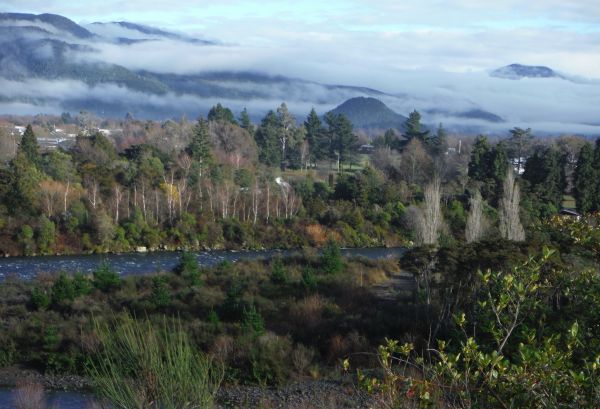 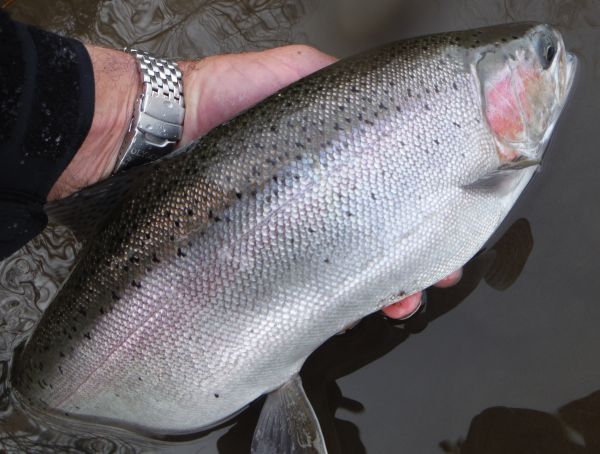 A little bit of wind today but as the school holidays draw to a close anglers and their families have enjoyed some beautiful winter sunshine here in Turangi. For many, the frosty, finger numbing mornings of the last few days are all part of the magic of winter steel-head fishing but I have to admit the older I get the more difficult it is to leave the comfortable glow of the log burner and get out to the garage to pull on those damp, cold waders. A little bit of wind today but as the school holidays draw to a close anglers and their families have enjoyed some beautiful winter sunshine here in Turangi. For many, the frosty, finger numbing mornings of the last few days are all part of the magic of winter steel-head fishing but I have to admit the older I get the more difficult it is to leave the comfortable glow of the log burner and get out to the garage to pull on those damp, cold waders.
Mind you, once you start walking along the banks of the Tongariro the cold is soon forgotten and you only have to look around to see why anglers come back for more, year in year out.
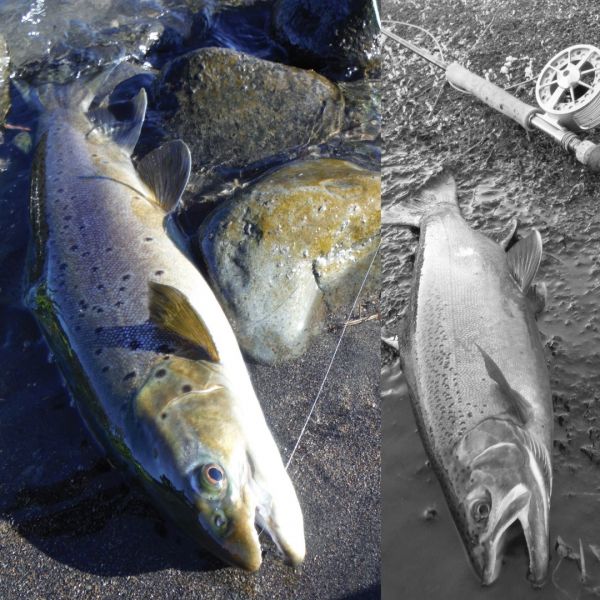
We're still waiting for that first big push of spawning rainbows to take place but there are more and more fish showing up fat with eggs. The main runs continue to show a little later each year and September and October will probably be the pick of the months again this year. More browns amongst the rainbows this week and I picked this slightly skinny one up in Judges a couple of days ago. I thought I'd hooked into another a few casts later but it turned out to be a rainbow jack hooked in one of its pelvic fins. Its amazing how differently a fish fights when its hooked anywhere other than its mouth. You can tell straight away if its tail hooked because you can feel the swimming motion right through the rod. But if its hooked elsewhere it can give the impression you're playing a much better fish than you actually are. Without control of the head these fish are often lost and give rise to many of the tales of the monster trout that got away !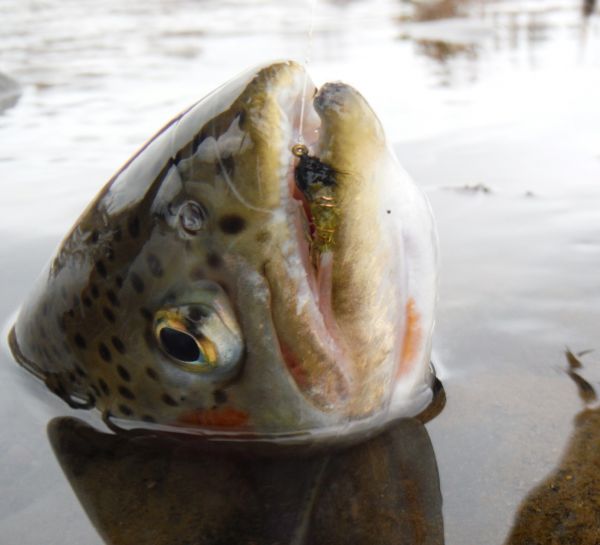 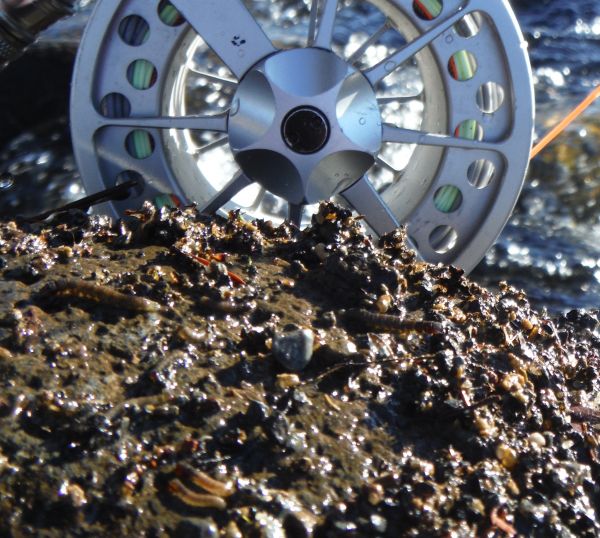
Turn over a rock or two virtually anywhere you have well oxygenated riffles {for instance above a pool} and there'll be caddis on the underside.
The colors vary but presently there are lots of olive colored larvae in the river and some of them are quite big. The fly above is tied on a size 10 and has fooled a few trout this week.
The Tongariro supports a thriving caddis population, especially free swimming varieties, which makes them an important prey item for feeding trout.
They use their legs to swim but will also drift with the current to change location or if they're dislodged from their hiding places during a fresh. Fish them through runs and riffles for best results.
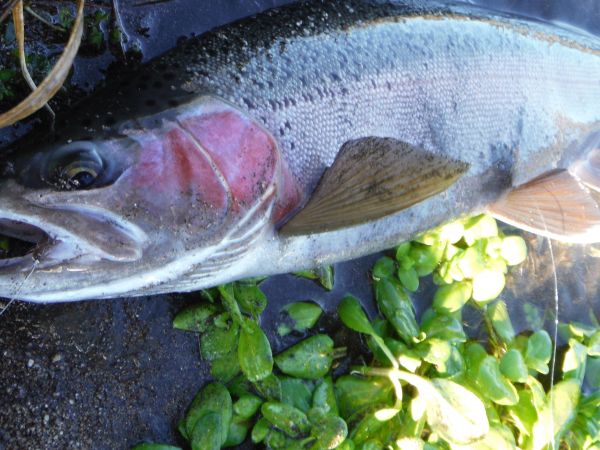 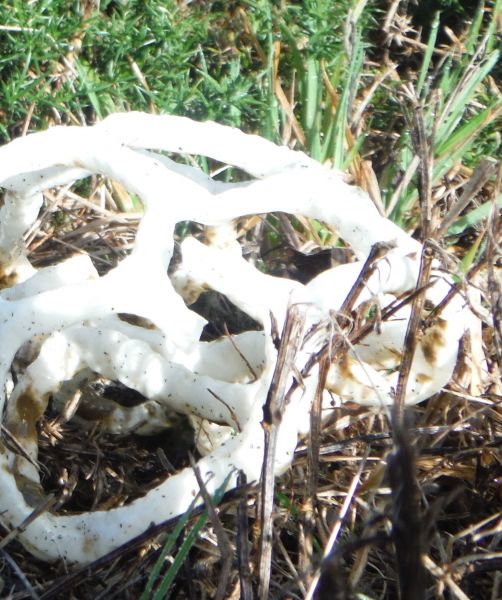
I'm still not having much success with globugs and have stuck with natural patterns ... so far this winter I don't think I've taken a fish on an egg fly.
But I'm pretty sure that'll change before long.
Now ... have you spotted these things dotted along the access tracks. I'd never noticed them before but first saw them a month or two back either on their own or in small clusters.
Its been driving me nuts because I hate looking at something and not knowing what it is ... I did that for years with my first mother-in-law. Anyway I was told about a site called Nature Watch ... link below.
Its a great web-site for anyone interested in the flora and fauna in New Zealand and after signing up then posting a pic and brief description {which they term an observation} it was quickly identified by other members as a white basket fungi.
This they tell me is a species native to NZ and 2014 has been a particularly good fruiting year for them ... so now you know.
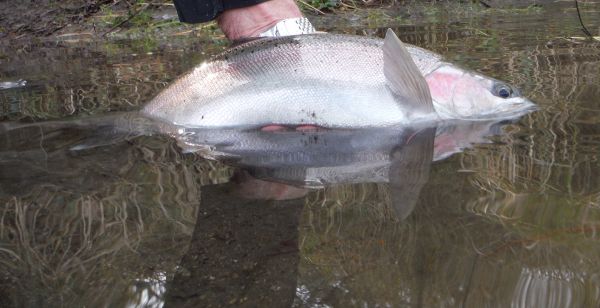
More wind and some rain on the horizon for the early part of next week. But despite the late show of big runs again this year expect more fish like this to turn up during the week. There are places on the river that rarely produce in summer but these "winter lies" are worth fishing now. With the school holidays over there should be plenty of room for everyone ... see you out there.
Tight lines guys.
Mike
www.naturewatch.org.nz |
|
|
| Back to Top |
|
|
|
|
|
|
|